From the catalog of Wallis and Wallis, British gun
Lot 1060 ... A 6 shot .44 Starr SA Army Perc Rev 14",
Eben T. Starr of Yonkers, New York, might not have
To generations of gun collectors who pored over
Starr’s second patent No. 30843, issued December 4,
, illustrated the perfected type of Starr double
Starr assigned his two patents plus a further patent
The first factory was at Binghamton, and by
NEW YORK, August 31,
Clapp set forth the schedule of delivery, 500 each
In September Starr proposed to increase the order
the first 1,000 were delivered of the new double
President Woolcott stepped into the fray and pre
it seems that had the sample been identical to those
Starr also obtained a contract for 10,000 breech
The failure to mention Starr in the list worked against
The price of $20 for Navy .36 double action re
In explaining his decision to Secretary Stanton, Holt
The record reveals actual deliveries and payments
October 15, , 500 Navy revolvers purchased at $20.
November 19, , 500 Navy revolvers purchased at $20.
December 18, , 250 Navy revolvers purchased at
Army revolvers at $25 were accepted and paid for as
February 22, , 1,000 Army revolvers contract at $25.
March 25, , 600 Army revolvers contract at $25.
March 25, , 1,400 Army revolvers contract at $25.
Two stories with a heavy machinery ground floor
Automation is a fancy new word, but to the handi
From the first floor where the heavy drops or forges
Lot 1060 ... A 6 shot .44 Starr SA Army Perc Rev 14",
Col.Good Condition but action AsColt Address New York,
Eben T. Starr of Yonkers, New York, might not have
biteon it as a hitherto unknown Colt double action
modemrevolvers of the Civil War era.
To generations of gun collectors who pored over
Jones of Binghamton.Few have bothered to find outHe Pays The Freight.
Starr’s First Patents
Starr in obtained his first patent. Though thelifter leverof form similar to our accepted
lifter levertrigger. Secondly,
Starr’s second patent No. 30843, issued December 4,
, illustrated the perfected type of Starr double
Starr assigned his two patents plus a further patent
freeholder with property valued at over $40,000.
The first factory was at Binghamton, and by
We had only made one thousand for the Governdeclared Treasurer Clapp before thement in ,
andprior to August of .five hundred for the trade,
First Contracts
NEW YORK, August 31,
Clapp set forth the schedule of delivery, 500 each
In September Starr proposed to increase the order
the first 1,000 were delivered of the new double
President Woolcott stepped into the fray and pre
the armory in Binghamtonis employed exclusively in the manufacture of pistols.
the extent (ofIn detailing both failures to deliver rethis works) is exceeded only by the Colt establishment, in Hartford.
We were not ready to deliver in October (), but weThe fact that .36 caliber arms predominantly weresold to Major Hagner, in New York, 500, navy size, at $20, in that month. We also sold in like manner, 250, navy size, in November, and in the same month we sold 250, navy size, to the agent of Ohio. We have delivered and received certifi cates for 1,000, army size, in January; 600, army size in Feb ruary; 1,400, army size, in March, and we notified the depart ment that we had 1,000 ready for inspection March 28 or 29. The department immediately sent inspectors, who are now (April 10, ) at work.
army sizein Treasurer
it seems that had the sample been identical to those
Starr also obtained a contract for 10,000 breech
exigencies of our cavalry service,price $29. With
proposed tomake the whole Springfield gun, including the barrel.
We will make barrels from steel rodssaid Wolcott,
turns out theFor thework so that it requires more hand work than the Springfield musket machines ought to do.
Should the order for carbines be filled, we couldturn all our stock, machinery &c. to work upon the muskets without important loss. We are arms makers, have all our capital so engaged, and expect to continue in the business, having been at it now (April 15, ) for three years. We therefore must seek this kind of work, even if the Government do not employ us, Wolcott explained to the Commissioners.
Adverse Action by Commissioners
When Stanton called a screeching halt to the Warregular manufacturersand from whom Ripley wishedfor this department
The failure to mention Starr in the list worked against
regular manufacturers.
The price of $20 for Navy .36 double action re
In explaining his decision to Secretary Stanton, Holt
The record reveals actual deliveries and payments
October 15, , 500 Navy revolvers purchased at $20.
November 19, , 500 Navy revolvers purchased at $20.
December 18, , 250 Navy revolvers purchased at
Army revolvers at $25 were accepted and paid for as
February 22, , 1,000 Army revolvers contract at $25.
March 25, , 600 Army revolvers contract at $25.
March 25, , 1,400 Army revolvers contract at $25.
First Deliveries
First deliveries of the double-action revolvercostingat the renegotiated price oftwice as much as Colt’s
A New Factory
Possibly an expansion of revolver making facilitiesTwo stories with a heavy machinery ground floor
Automation is a fancy new word, but to the handi
Victorian
automation
From the first floor where the heavy drops or forges
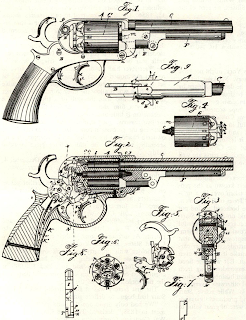
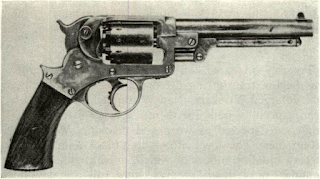

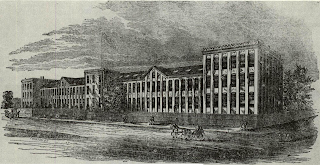
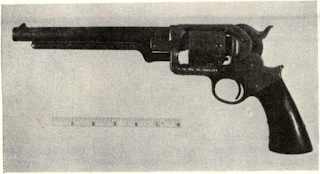
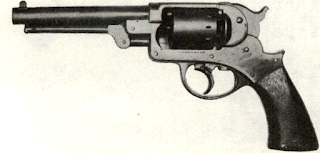
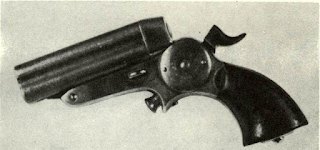
Comments
Post a Comment